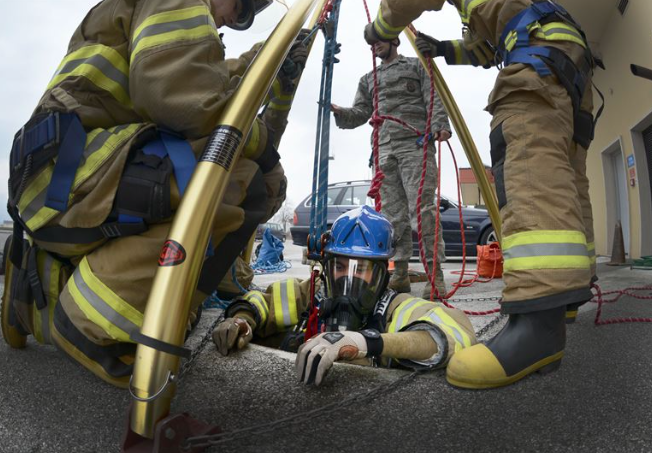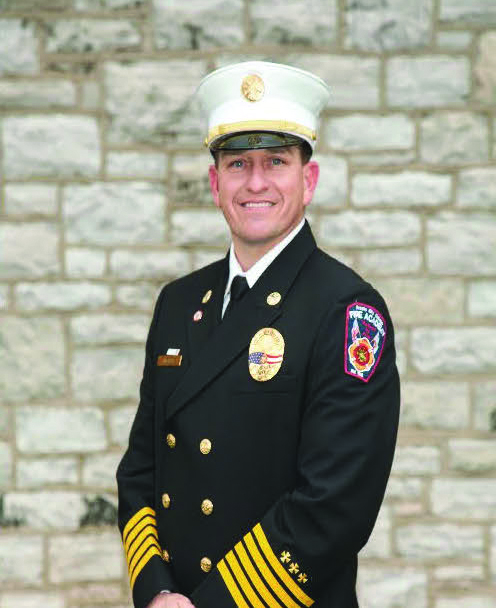
Confined Space: The Rescue
Fire departments across the nation are now providing an all-hazards response capability. This all-hazard scope of services typically includes some type of technical rescue delivery. One of the most common technical rescues is confined space rescue. Confined space rescue is a high-risk low-frequency event. These events can challenge the most experience fire and rescue, professionals. So, what can we do to remain safe and operate efficiently in these environments? This article discusses personal protective equipment (PPE), and tips for rescuers that can serve as a starting point to a successful rescue entry. While PPE will vary based on the number of variables the items listed below can play a significant role for rescuer safety and operational success:
- Basic PPE components: Helmet (not structural fire helmet and ANSI Z89.1 approved), eye protection, boots, gloves, thin long sleeve shirt or jacket, pants.
- Type III Harness
- Atmospheric monitor (4 gas)
- Cutting tools (knife or utility scissors)
- Mainline/tagline
- Extra carabiners, ascenders, prussic/cordage
- An intrinsically safe light source with an emergency backup
- Chem lights
- Radio communications- Portable or communication system
- Self-Contained Breathing Apparatus or Supplied air breathing system W/ P.A.S.S. Device
- Escape pack (10 min)
Some operational tips for the rescuer include:
- Prior to entry, the rescue Entrants and the Backup team should review any information from the IC or RP in regards the layout and possible victim location.
- Be familiar with the action plan and backup plan prior to entry.
- Before entry, pre-determine the method of extraction and possible location of the victim.
- The backup team should be staged outside the opening ready for immediate deployment.
- Rescuers should have their vitals taken and recorded by EMS personnel prior to entry and upon exit from the confined space.
- When using communications systems, make sure that you pre-check your communication device before making entry. If using a communication system, combining your hardwire communications lines with your supplied airlines can lessen the number of lines to manage. Using standard Figure 8 or over/under coils can help with this task and make it easier to feed as the rescuer moves.
- Understand the communications plan before entry: radio, rope, or other means.
- Line management can become a significant issue if possible wrap your supply airlines with a color shell. These color-coded lines will be much easier to track for people outside the space during line management and emergency situations.
- Communicate with the attended to track their travel route. The attendant can map the route as the rescuer reports landmark’s, turns, and changes in elevation. If the operational time for the rescue is extended and multiple rescuers used, this will cut down travel time for additional rescuers as they try to progress from where the last rescuer left off.
- Use line tenders when rescuers traverse significant distances and turns. The line tenders will be inside the space at turns to make travel for the rescuer unimpeded by line friction.
As said previously, these are just some simple tips over and above the basics to improve rescuer safety and operational effectiveness. Utilize NFPA standards to guide your service delivery, and as always, train like your life depends on it, because it does.
Jacob McAfee, MS, CFO, CTO, MIFireE is the Fire Chief for the Fresno City College (FCC) Fire Academy and Director of Fire Technology programs. Jacob is a former DoD Fire Chief with 18 years of fire service experience, serving in every major division including Chief of Department. Chief McAfee is a credentialed CFO/CTO with the Center for Public Safety Excellence and serves the Institute of Fire Engineers, Member grade. He holds Masters Degrees in Occupational Safety and Health and Emergency Management and is currently pursuing his Ph.D. in Emergency Management with Capella University.

Jacob is a former DoD Fire Chief with 18 years of fire service experience, serving in every major division including Chief of Department. Chief McAfee is a credentialed CFO/CTO with the Center for Public Safety Excellence and serves the Institute of Fire Engineers, Member grade. He holds Masters Degrees in Occupational Safety and Health and Emergency Management and is currently pursuing his Ph.D. in Emergency Management with Capella University.
